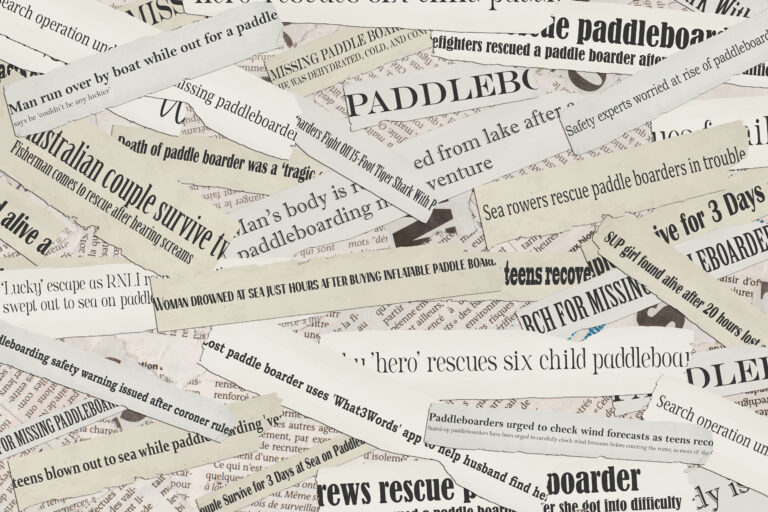My aim in writing the SUP SAFETY books wasn’t just to try and help people stay safe, although that was of course the primary aim. However, I was also unashamedly doing it for my own benefit. By documenting everything I knew, any gaps or inconsistencies in my knowledge would soon become apparent – and sure enough, they most certainly did. Plus which, there was a simple curiosity factor. How much did I actually know? You can’t weigh knowledge, but you can certainly word-count or page-count it – and it turns out to be around 133000 words, or 385 pages.
Which seems like rather a lot. But actually, I’m pretty sure that if I were to sit any experienced mariner or watersportsperson down, and extract from them everything they knew about the aquatic environment they spend their life in, it would end up amounting to a similarly large word count. Or indeed, the knowledge of a mountain guide, or a backwoodsperson, or anyone else who knows how to stay safe in a challenging environment. There is a lot to it.
Luckily, in our particular environment you don’t need to know it all, indeed you can get by with very little. A complete beginner could get on a paddleboard with absolutely no safety knowledge at all, go and have fun, and come back unscathed. It happens all the time. But that is definitely rolling the dice, and if that person persists in going paddling and gets more adventurous with how far and where they paddle, without learning or following any of the good practice of paddleboarding safety, then eventually they’re going to get caught out.
And that’s what it really comes down to – the more knowledge you have, the less likely you are to get caught out.
So don’t be put off by the fact that I’ve written 133000 words on paddleboarding safety. It’s actually an extremely safe activity, way down on the risk scale compared to most recreational activities. Take mountain biking. According to research, you can expect an injury for every 200 hours of cross-country mountain biking, while for downhill racing it’s 4.3 injuries per 100 hours.
You don’t even want to look at the injury stats for trail running!
So let’s just stay inside. Or maybe not. According to Google, 70 people die each year in the UK in DIY accidents. Rather alarmingly, in New Zealand in 2010 we apparently lost 600 people to DIY. In the USA it’s estimated that 200,000 people go to the hospital every year as a result of DIY injuries…
Unfortunately we do not have any (international) statistics for paddleboarding risk. Yes, it most certainly isn’t entirely risk free. Water is an unpredictable and fundamentally hostile environment. Just look at those headlines on the image below. People do get into trouble. People do die. But the numbers are still of vastly lower orders of magnitude to the aforementioned activities. And with the right knowledge, you can reduce the risk to close to zero, and quite conceivably paddleboard all your life without ever becoming a statistic. And then you too, should you feel so inclined, could write down everything you know about paddleboarding safety and be astonished that it amounts to so many pages!

